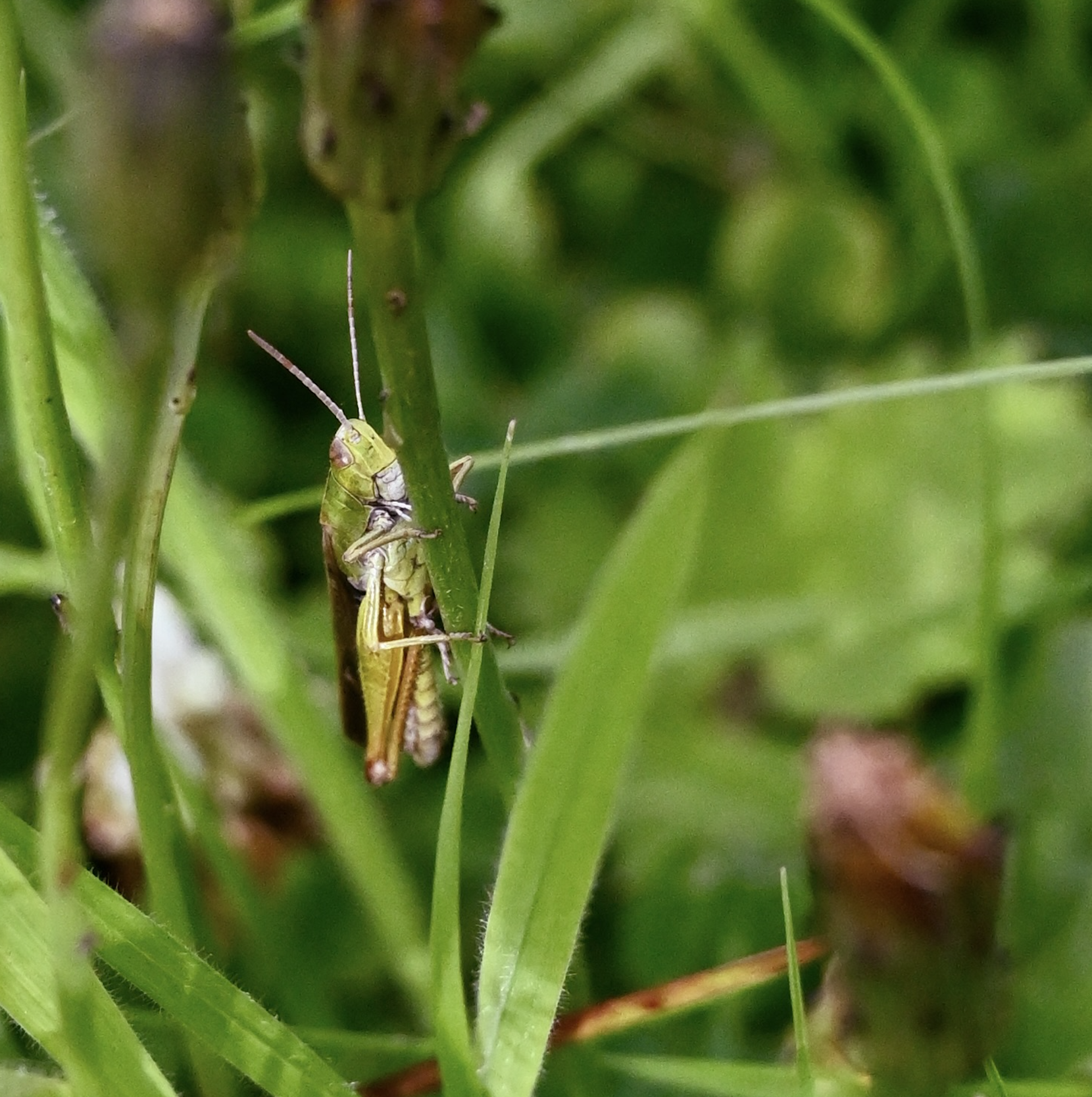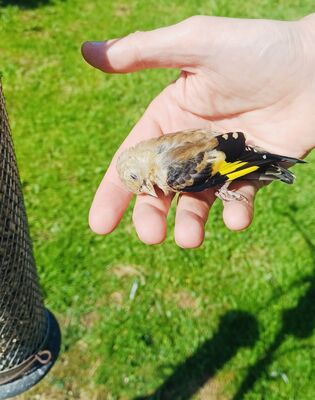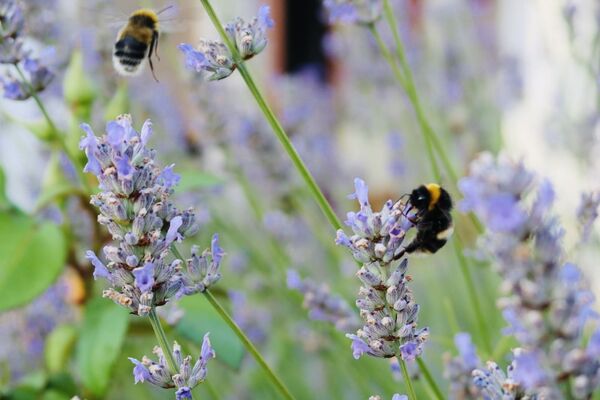THIS is the common green grasshopper – but not just any common green grasshopper. This one lives in Dúlra’s garden. And that amazing image you’re looking at, well, Dúlra took it on his phone this week.
The grasshopper was so close it could have climbed on to Dúlra’s nose instead of the stalk of the daisy. A few minutes earlier – when Dúlra decided that the best way to survive Tuesday’s sweltering temperatures was to lie in the garden – he’d no idea he’d soon be surrounded by some of our most amazing – and slowly disappearing – creatures.
The calls of grasshoppers and crickets (grasshoppers have longer antennae, but really those titles are interchangeable) used to be commonplace when Dúlra was young, but they vanished just like the corncrake and so much of our wildlife.
Then came No Mow May, a scheme asking people to let their lawn grow a bit longer for a month. Dúlra was delighted to do it last year (actually not to do it might be more accurate – isn’t it great to take part in a campaign which requires you to do… nothing?). In fact it became No Mow May, June, July and into August before he was ordered by the powers at be to take action and bring some order back to the garden.
Even then we left a strip of wilderness on either side of the lawn. And one day he was stunned to hear a cricket calling there. We’d lived here almost 20 years and somehow this wee creature had managed to survive the monthly lawnmower’s blade.
Maybe it was hoping that the old days would return when grass grew tall and all manner of insects thrived. These gardens were once the lush lower slopes of the Belfast hills, packed with wildflowers like meadowsweet and orchids.
When houses were built, the myriad of insects were all but extinguished. The fragments of fields that became gardens were regularly shorn by lawnmowers. We didn’t want wildflowers, we wanted short green grass.
This week, as Tuesday’s balmy sun turned Belfast into the Mediterranean for a day, Dúlra decided to do something that he rarely gets the chance to nowadays – just lie on the lawn and catch a few rays.
It was cosy and warm and he found himself half dozing off… helped by the birds calling in the distance and the buzzing of bees on the dandelions and the whirring of the… grasshoppers! He suddenly became fully aware that all around him the wee creatures were calling. And then, just inches in front of his eyes, he spotted one climbing up a daisy stem. He watched it as it walked slowly to the very top and then it started rubbing its legs together, adding another instrument to the wildlife orchestra.
DfI defends cutting grass at Broadway during bird nesting seasonhttps://t.co/MEDuRMrkUs
— Andersonstown News (@ATownNews) July 26, 2024
Crickets and grasshoppers won’t call when a person is near – they are incredibly aware of movement – but if you’re half-asleep and lying still on the grass for 10 minutes, it seems you become part of the landscape.
Dúlra was able to focus his phone on his new wee friend – an dreoilín teapaigh glas coiteann in Irish – and was amazed how the picture turned out.
We plan to cut the garden some time in August but leave those two long swathes of uncut grass along the hedges on either side of the garden – which will only be cut when summer’s long over.
Those two strips allowed the grasshoppers to somehow be reborn. They are living proof that, given half a chance, nature can rebound spectacularly.
* Another amazing sound has been recorded this summer in the deep south of Ireland – the nightjar. This nocturnal bird vanished from our hillsides decades ago and only a handful breed in this country.
The recording of it calling last week caused a bit of an internet flurry – but this bird actually bred on our own Colin Mountain. Dúlra once spoke to a Andersonsonstown man who used to live on the mountain above Poleglass and, like most country folk, he knew his birds. And he mimicked the sound of the nightjar's call as proof of what he used to hear as a boy.
Dúlra himself is convinced he saw one on that same mountain. While out walking one day he startled a bird that was resting in the heather and it took off like no other bird he had ever seen – it looked more like a giant moth.
With all the conservation work going on at nearby Mullaghaglass and Slievenacloy, could the elusive nightjar return just like Dúlra's grasshoppers?
* If you’ve seen or photographed anything interesting in the wild, or have any nature questions, you can text Dúlra on 07801 414804.






